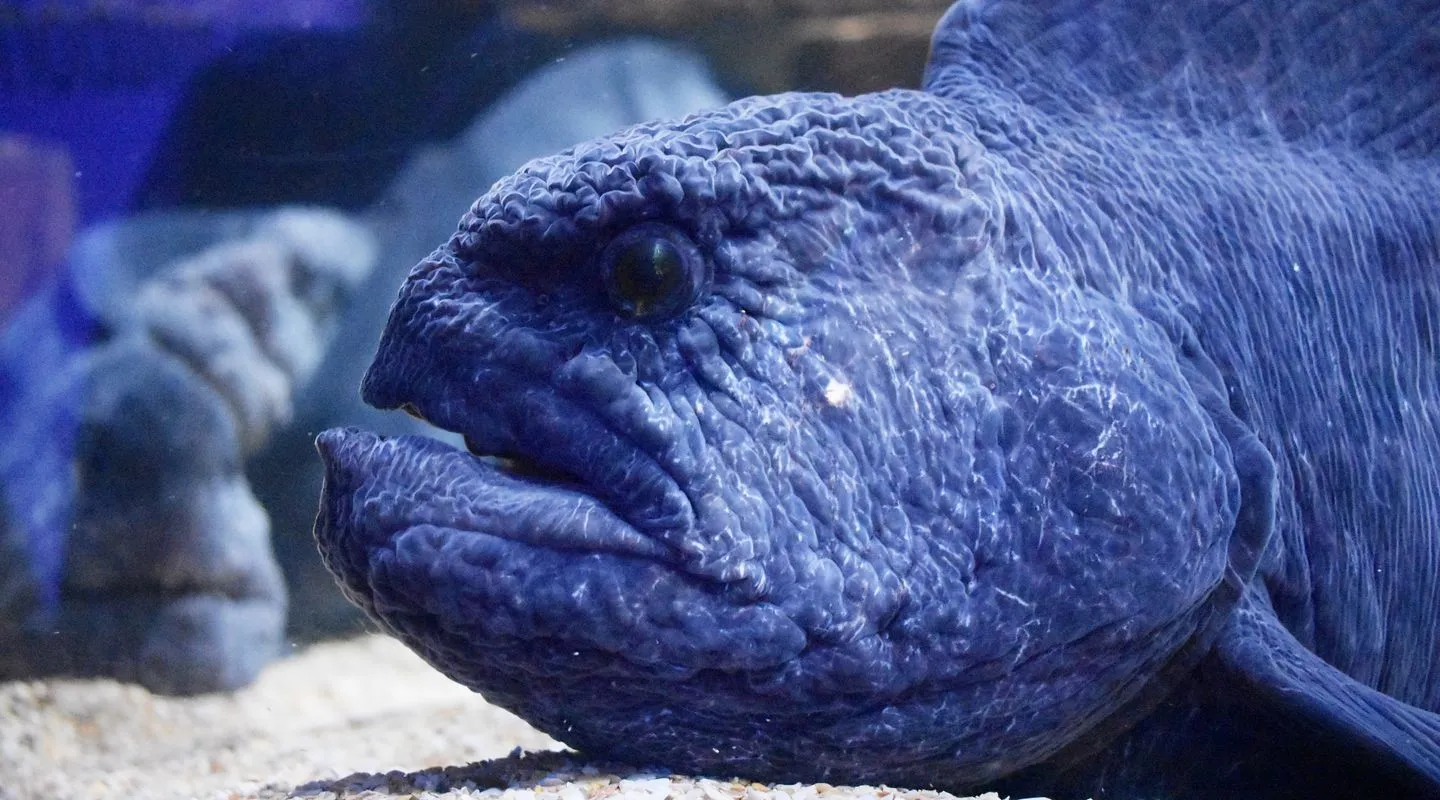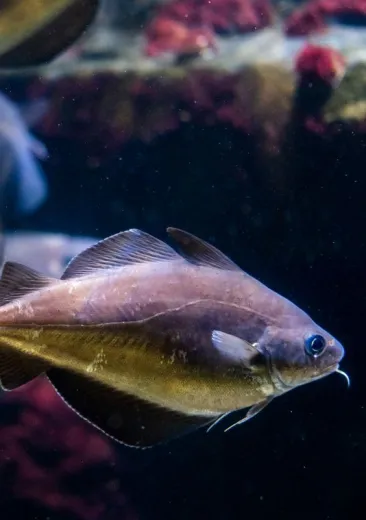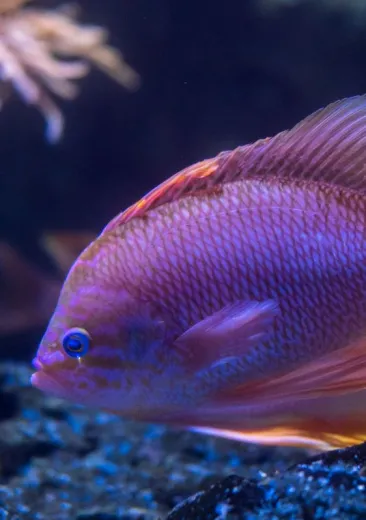Where is the animal to be found?
Adult wolf eels rarely leave their burrows and do not swim very often. They seek rocky shelters, whereas juveniles rise to the surface after hatching and swim in open water for 2 years. They then descend to the coastal depths to lead a sedentary life like their parents.
Therefore, the wolf eel lives close to the seabed, in cold water, at a depth of between 1 and 220 metres. It can be found in the North Pacific and North Atlantic Oceans and as far north as the icy Arctic Ocean. It can also be found in the cold waters of South America, along the coasts of Argentina and Chile.
How can it be recognised?
This fish is recognised by its elongated body and powerful jaw, which it uses to crush the sea urchins that it feeds on. Its powerful canines are constantly visible, even when the wolf eel closes its mouth. This gives it a slightly fearsome appearance, but the wolf eel is not dangerous to humans. A male can grow to 2.40 metres in length and weigh up to 18 kg.
What is distinctive about it?
The eggs of wolf eels are mainly preyed upon by rockfish. The eggs can also be found clinging in underwater kelp forests.






